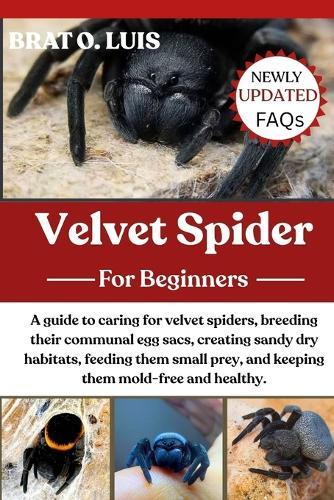Overview
The recognition of velvet spiders stretches back to the earliest taxonomic explorations of European and Mediterranean arachnids. Long before detailed scientific classification emerged, naturalists and local people recognized these animals by their velvet-like appearance, bright coloration in some species, and their preference for dry scrublands, rocky terrains, and grass-dominated ecosystems. Eresus walckenaeri itself was first formally described in the 19th century, part of the wave of arachnological documentation sweeping across Europe. At that time, naturalists were beginning to codify not only the external features of spiders but also their ecological behaviors, such as burrowing and maternal care. Its discovery represented a refinement within the genus Eresus, which had already drawn attention for its spectacular coloration and thick, plush-like setae. Taxonomic Placement The velvet spiders belong to the family Eresidae, within the infraorder Araneomorphae-the so-called ""true spiders."" The genus Eresus is one of the most iconic groups within this family, widely recognized for the bold red-and-black coloration of certain species, often compared to ladybirds or jewel-like insects. Eresus walckenaeri, however, occupies a somewhat distinct position within this genus. Unlike some of its more vividly marked relatives, this species emphasizes darker, subtler patterns, with velvet-black or dark brown tones often streaked or patterned according to sex and maturity. Its morphology retains the robust, rounded body typical of Eresus, but its coloration demonstrates the variation present within the group. From a taxonomic standpoint, the genus Eresus has historically been the subject of considerable revision. Species were frequently reclassified, lumped together, or separated based on small morphological differences. The study of Eresus walckenaeri contributed to these revisions, highlighting the diversity within Mediterranean velvet spiders and reinforcing the need for careful examination of genitalia, setae arrangement, and coloration to delineate species boundaries. Historical Naming and Dedication The species name ""walckenaeri"" pays tribute to the French naturalist Charles Athanase Walckenaer, a prominent arachnologist of the 18th and 19th centuries. Walckenaer's contributions to spider taxonomy laid groundwork for many subsequent descriptions, and naming a velvet spider after him reflects both recognition of his scientific impact and the tradition of immortalizing key figures in taxonomy. Scientific Importance of Discovery The formal recognition of Eresus walckenaeri carried scientific significance beyond naming. Its classification helped define the diversity of velvet spiders, illustrating that the group included not only brilliantly colored representatives but also darker, more subdued forms adapted to varying habitats. This discovery encouraged broader explorations of Mediterranean arachnids and supported the growing understanding that coloration alone could not define taxonomic categories. Modern Refinements in Classification In modern arachnology, molecular tools and detailed morphological examinations continue to refine the placement of Eresus walckenaeri. DNA sequencing, comparative anatomy, and ecological studies now confirm its status as a distinct species within the genus. These refinements not only clarify taxonomy but also contribute to conservation, ensuring that the species is recognized as unique and therefore deserving of specific ecological attention.
Full Product Details
Author: Brat O Luis
Publisher: Independently Published
Imprint: Independently Published
Dimensions:
Width: 15.20cm
, Height: 0.80cm
, Length: 22.90cm
Weight: 0.204kg
ISBN: 9798269131023
Pages: 146
Publication Date: 09 October 2025
Audience:
General/trade
,
General
Format: Paperback
Publisher's Status: Active
Availability: Available To Order

We have confirmation that this item is in stock with the supplier. It will be ordered in for you and dispatched immediately.



